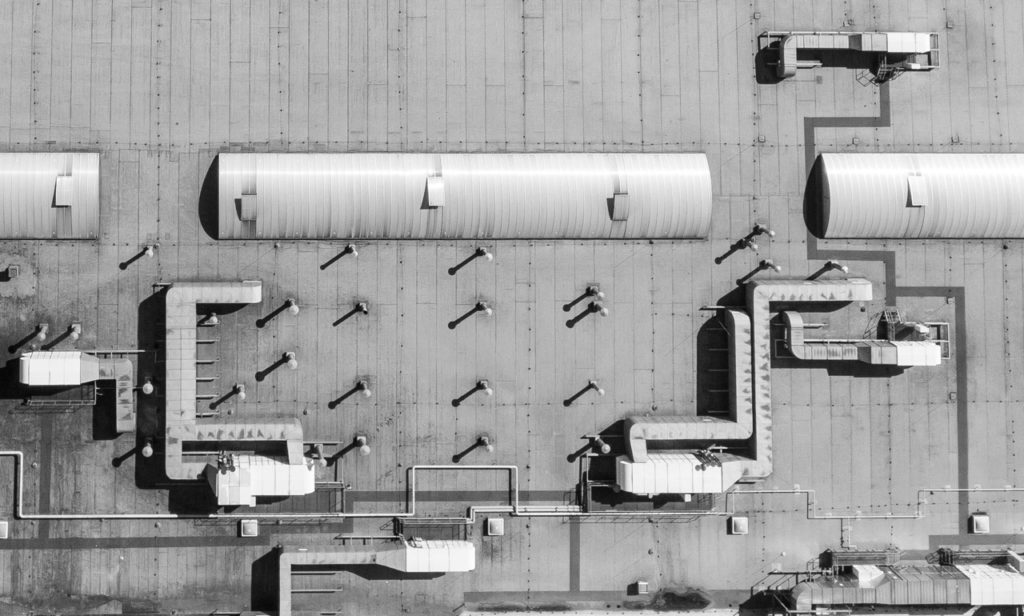Let’s face it, you can’t always eliminate a potential rooftop hazard. It simply isn’t feasible to make a rooftop off-limits because multiple legitimate reasons exist for being on a roof. You can, however, start making it safer today by following a few easy steps!
Just Get Started!
Stop procrastinating and start assessing the existing rooftop conditions. There are three important components to keep in mind. The roof must be:
• Safe – free from harm or risk
• Secure – trustworthy and dependable
• Simple to navigate
Start with the Roof Access
Ask some basic questions about the roof:
• How do people access the roof? (roof scuttle/hatch, ladder, walk-out door)
• Is the area properly lit? (remember that shaded areas next to bright sunlight can also hide dangers)
• Do any existing safety measures exist? (railing, ladder grab bars, landing platform, tie-off points)
• Is the roof properly maintained and free of obstructions or jagged edges that could cause cuts?
Common Roof Safety Issues
The best thing to do when assessing roof safety is to use common sense. If it looks dangerous or questionable, say something. Address the issue immediately before someone is injured or worse. Make sure the roof has none of the following conditions that could put someone in immediate danger.
• The roof hatch is 6’ away from the leading edge with the hatch opening up toward the edge.
• The parapet is less than 39” (if there is even a parapet).
• There is no railing on either side of a ladder accessing a roof.
• The ladder does not have a self-closing gate at the opening.
If any of these situations match the scenario on the roof, common sense should dictate that you immediately address these concerns to ensure the safety of workers.
Why are Workers Accessing the Roof?
The most common reason for being on the roof is to service a piece of equipment. This may be an emergency breakdown repair or routine maintenance. The primary safety factor is the location of the equipment to either the edge of the roof or to a skylight.
• OSHA requires protection, like a railing, if the equipment is within 6’ of the fall hazard (provided a good safety plan is in place).
A safe workspace should allow workers to focus on their task at hand without being concerned about the risk of falling. Skylights, smoke hatches, vents, courtyards, and all other openings need to be protected the same as the roof edge.
Plan Their Route
We know how workers are entering the roof and why they are on the roof, so now we need to understand how they will travel around the roof.
• If the roof is a commercial flat roof, think about limiting unnecessary access to the roof edge. (A warning line system 15’ back from the edge would provide a clearly visible barrier from danger.)
• For a standing seam metal roof or metal profile roof, does it have a level walkway system to avoid tripping over the seams/crowns and valleys?
• Be direct and avoid the edge. (It might be smarter to purchase a crossover stair system to get over rooftop obstacles like piping rather than walk closer to the edge.)
• Are there any skylights in high traffic areas that may be a walking hazard? (If the skylight manufacturer does not label the skylight as fall protection rated, OSHA considers it a hole in the roof which will need to be either covered by a screen or surrounded by a railing.)
Remember that there are many ways to protect a rooftop but don’t lose sight of the big picture. The most comprehensive system that can be installed is a perimeter railing system that surrounds the entire roof perimeter. Unlike other active systems that add to the complexity of managing your safety plan, a railing system requires no annual training.
